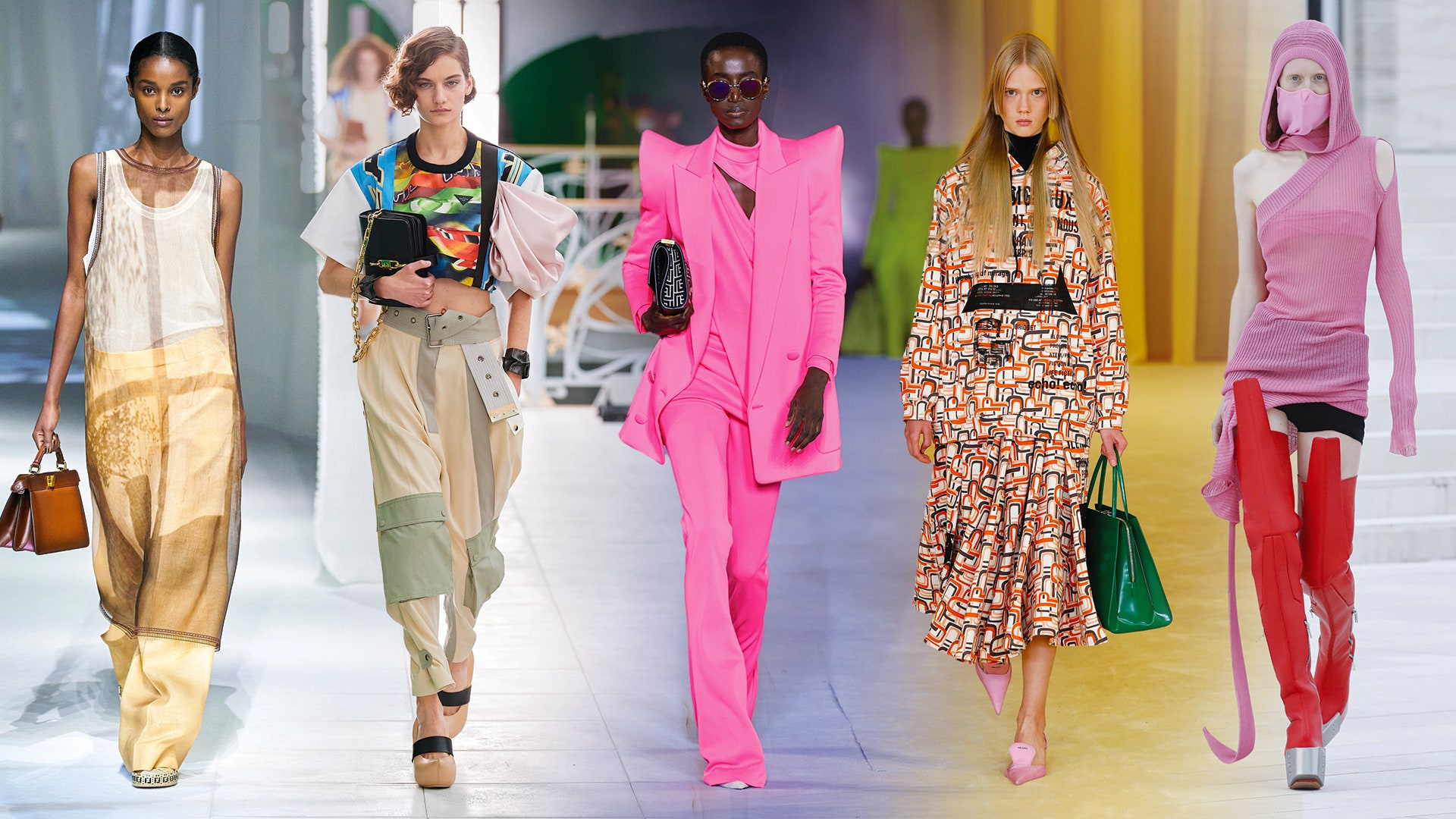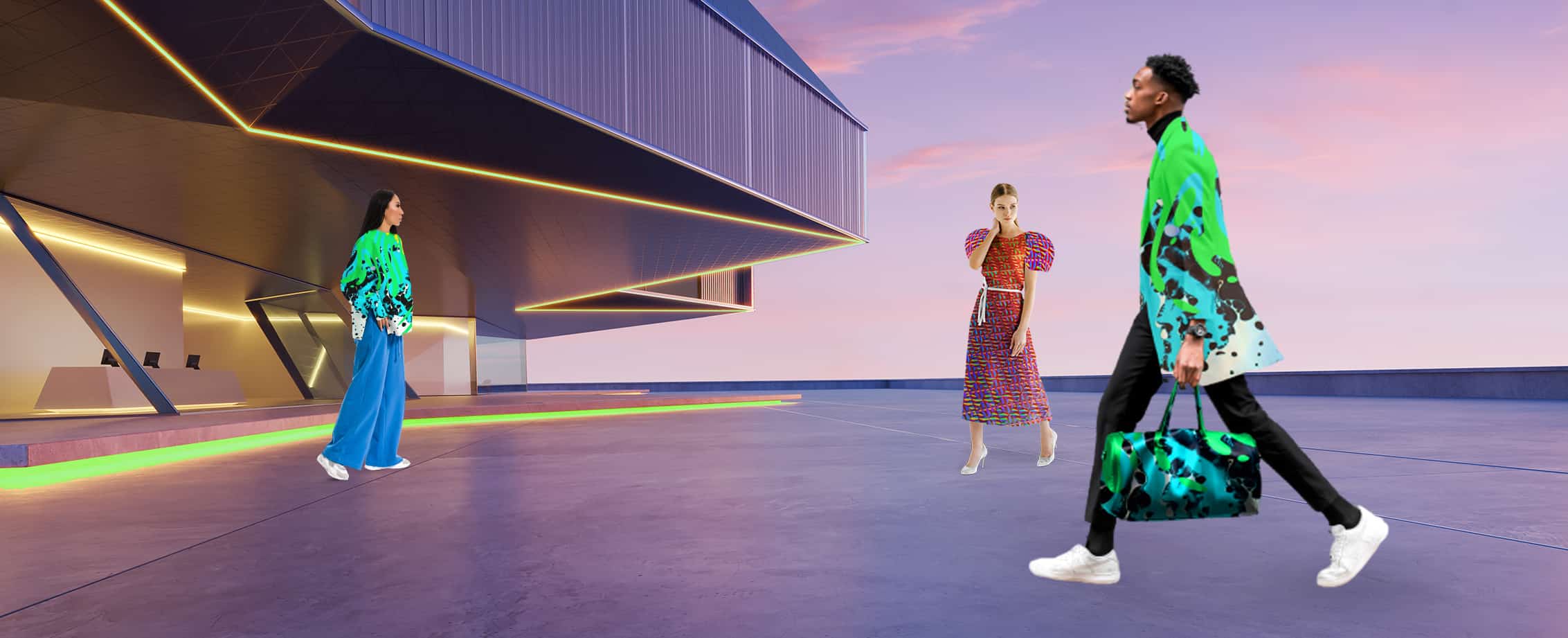Part 2 of The State of Fashion 2022 breakdown is all about domestic spending, wardrobe reboots and Metaverse madness.

Consumer shifts are not foreign territory for any industry, particularly fashion. Fashion is an ever-evolving game of trends, triumphs, and tribulations that brands must learn to play. Factor in pandemics, and you have yourself one gruelling maze to navigate. Here are the consumer shifts brands should get ready to embrace in 2022.
The coming year will see a rise in domestic luxury spending as we continue to wait for international travel to flash us the green light ahead. Our pandemic love affair with loungewear and sportswear will thankfully be joined in favour once again by other categories. A need for newness and social event attire will be a top priority for consumers. And finally, the Metaverse will provide a new avenue for expression and creativity. Brands will benefit from jumping on the fast-moving Meta-train to explore new sources of revenue.
Domestic Luxuries
Before the COVID pandemic, 30-40 per cent of luxury brands sales came from shoppers in transit or abroad. Amid international travel restrictions, these behaviours have switched to see consumers buying luxury online, taking advantage of duty-free and the shrinking gap between domestic and international markets. But it isn’t until international travel returns that the luxury category will completely recover.
“Travel has traditionally been a key driver of luxury spending, but international tourism is not expected to recover until 2023 and 2024.”
To ensure the upward and onward, brands will need to revaluate their dependence on tourism and shift their focus to localised market strategies. Brands will need to build meaningful relationships with domestic customers via techniques such as introducing improved clienteling, hosting community events and offering tailored merchandise to appeal to locals.
International travel restrictions haven’t been all bad, though, allowing domestic markets an opportunity to benefit from local consumerism. Locals have embraced supporting their surrounding businesses, and this isn’t showing to be a passing trend.
Wardrobe Reimagined

As our situations underwent sporadic changes during the pandemics, consumer demands did. Sales were irregular with spikes one minute and a lull the next, and only categories that fit the moment did well in outperforming others. Loungewear and activewear were among the few that managed success during these times. Thankfully, other categories will meet these favoured departments again as we return to social normality. Workwear may, however, hold onto comfort dressing a little longer as traditional workwear adopts a more “casual” edge. Similarly, consumers adjusted preferences for more practical heel shapes will continue as a more popular choice among buyers.
A concept is known as “revenge shopping” will give brands the necessary oxygen for revival. As a result of consumers deprivation of brick-n-mortar browsing and international travel, they are ready to release pent-up desires. Formal wear sales will reinvigorate in 2022 after the industry saw a 200% rise in global monthly searches in 2021. Alongside this upsurge, consumers will also be looking to spend more on investment pieces and versatile items to shop more consciously.
This trend, however, will not affect the sales of inexpensive items and impulse purchases. A pleasant stimulation to fashion in 2022 is the increased consumers desire for experimental and expressional dressing. Subsequently, boosting demand for novelty designs. People will opt for colourful, bright, shiny, and playful pairings in 2022 as a means of bringing joy and cheer to their everyday. Bring on the bold, brash and beautiful!
Metaverse Madness

The Metaverse is quickly becoming a big business. Digital environments are fast transforming into worlds of boundless opportunity and potential for experimentation, collaboration, and of course, revenue. It is a new world for people to work, play, socialise and shop. Providing an opportunity for brands to engage more deeply and creatively with their customers and unravel new value streams. Nifty brands are grabbing hold of this potential to connect with high-value young participants. For millennials, digital assets such as digital fashion is a way to elevate their social media and is a natural evolution of applying a filter on Instagram or Snapchat, explains Co-founder and joint managing director of Dimension Studio, Simon Windsor.
Fashion in Gaming
Meanwhile, as gaming increasingly becomes an extension of reality, it has become a key target for fashion brands. Brands are engaging with this digital reality through collaborations with gaming platforms to design virtual fashion. Gucci, for example, has developed digital assets for gaming platform Roblox, creating a virtual Gucci Garden. An open-to-all, unrepeatable experience where visitors have the freedom to purchase and wear exclusive Gucci virtual items directly in the experience.
“The opportunities for gaming are extensive and offer a platform to engage younger consumers, as well as create a buzz with cohorts that would not usually interact with brands in a physical format.”
Most excitement surrounding the Metaverse is focused on non-fungible tokens (NFTs). These digital assets provide new ways for consumers to shop, exchange goods, and inhibit multiverse identities. In fashion, NFT’s have a range of uses, from product authentication- that help brands tackle counterfeiting and differentiate themselves to serving as collectables. Digital fashion creators The Fabricant and DressX are ahead in reacting to consumer demands for collectable and investment digital fashion assets. Certainly, paving the way for the fashion industry in the NFT space.
Moving Forward
To sum it all up nicely, 2022 is shifting consumer demands, and brands must be both proactive and reactive in their approach. Brands must adjust their strategies across development, merchandising and marketing. Additionally adopting a “two-pronged approach” to target domestic consumers and new travel and purchase behaviours. Companies should pay attention to strengthening their responsiveness to the supply chain, shifting away from the traditional, highly seasonal structure to a more adaptive arrangement. Players should also tap into the potential of non-fungible tokens, gaming and virtual fashion.
Subscribe to FIB’s Weekly Alchemy Report for your weekly dose of music, fashion and pop culture news!






